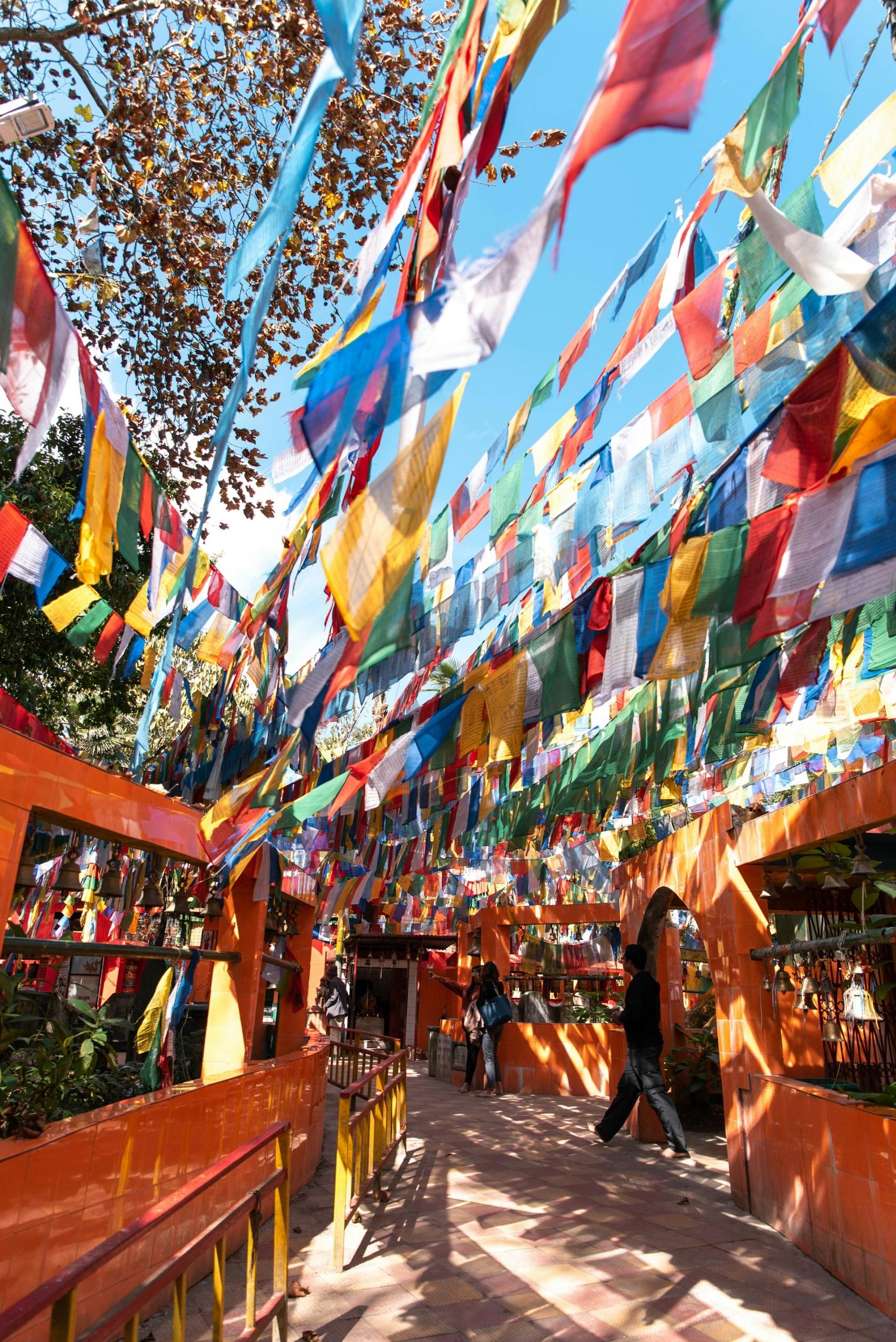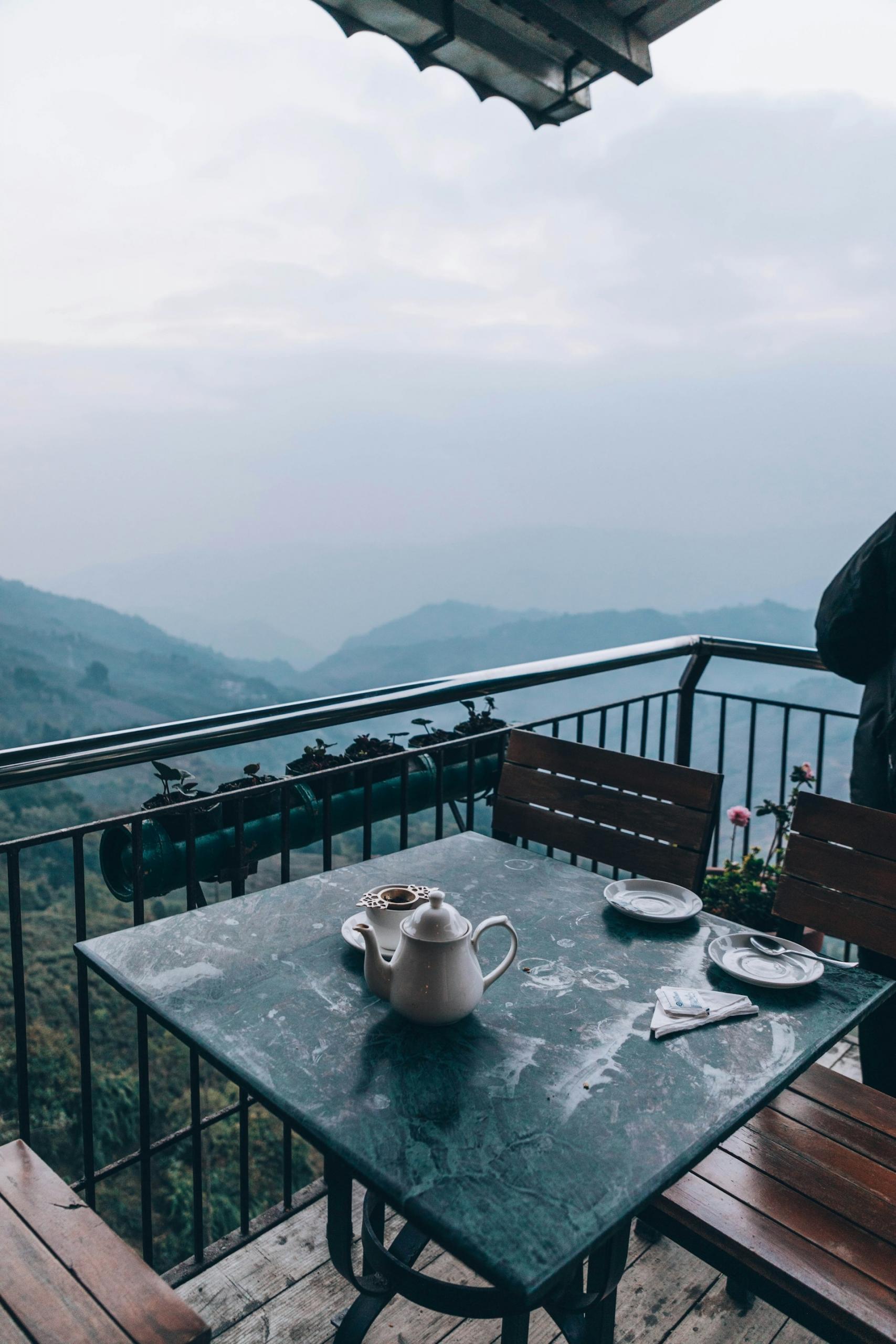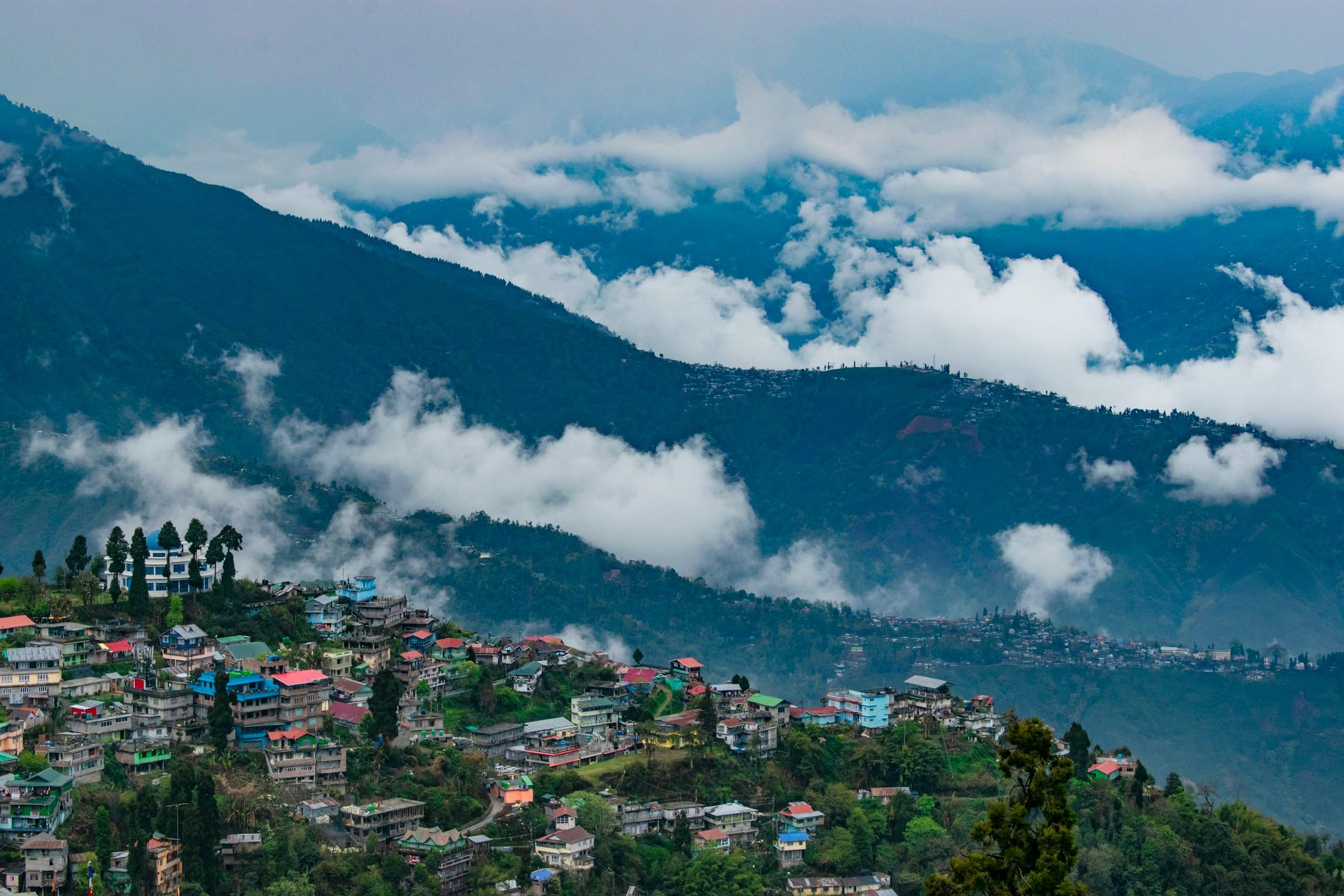Darjeeling is known foremost as an extensive tea plantation. Snuggled in the Eastern Himalayas, this West Bengal paradise was established as such around the 1830s-1850s by the East India Trading Company as a haven for Britishers to escape the harsh summer heat elsewhere in the subcontinent.
Quickly, the British began building bungalows in European styles. Thousands of labourers from the surrounding areas came to work on the project, building housing and completing the Darjeeling Hill Cart Road, which connected the area to Siliguri.
In 1840, Archibald Campbell, the superintendent of the resort at the time, began growing tea in the surrounding foothills, and it flourished in the subtropical highland climate.
In 1850, Darjeeling became a municipality, and soon after became an official hill station.
At the beginning of the 20th century, there were about 100 tea gardens employing some 64,000 workers. While this was great for tea lovers, it had the side effect of widespread deforestation, which completely changed the lives of many of the local forest-dwelling people.
In 1950, the British began to leave Darjeeling all at once as wealthy Indians purchased their bungalows.
Today Darjeeling remains a popular place for visitors since it’s a great reprieve from hot summer temps elsewhere, full of beautiful scenery, and, of course, home to some of the most delicious tea in the world.

Explore Darjeeling’s Best Attractions
Darjeeling is a quiet mountain town among the hush of lush vegetation and, at times, lots of fog and mist. While some parts of Darjeeling are dense and city-like, a lot of the area is a rather serene, natural landscape. So whether you’re more interested in mingling with lots of people and seeing the lively city or escaping into nature with nothing but birdsong filling the air, you can find it in Darjeeling!
The Glenburn Tea Estate
Since Darjeeling’s tea is referred to as the Champagne of Teas, you can expect to find an abundance of excellent tea plantations (or tea gardens or estates, as they are sometimes called) where visitors can come to see the tea plants growing, observe the harvesting process, and perhaps even get a glimpse of the drying and processing that goes into making the fine tea leaves ready for brewing.
At the very least, you’ll be sure to find a wide selection of delicious teas ready for sampling and taking home with you, so be sure to leave room in your luggage for lots of souvenirs and gifts for friends!
The Glenburn Estate was founded in 1859 by a Scottish tea company. It was purchased by Husna-Tara and Anshuman Prakash in 2001, who worked to repair the dilapidated Burra Bungalow and attempted to open a charming getaway destination - with much success! Since then, the Prakash family has come to be known as the Chaiwala family, and they have renovated many of the original bungalows on the property and made the estate into a luxurious, relaxing vacation destination. You can take walking tours of the property, observe the tea factory at work, and indulge in a splendid teatime with delicious, high-quality dishes.
Other popular tea gardens in Darjeeling are the Happy Valley Tea Estate and the Makaibari Tea Estate.

Darjeeling Himalayan Railway
The “toy train” that runs between New Jalpaiguri and Darjeeling was first opened in 1881 and still retains most of its original features. Today, the track is about 84 km long, using many loops and zig-zags to change elevation and travel the steep foothills of the Himalayas, carrying freight and passengers up and down the route.
You can ride this delightful little train as a passenger and see breathtaking mountainside views, snake through city streets just centimetres away from street vendors, and coast alongside fields of tea plants.
It is one of the most famous narrow-gauge trains in the world and in 1999 it was named a UNESCO World Heritage Site.
Exercise caution while riding the toy train; in 2019 a passenger taking a selfie fell from the car and succumbed to fatal head injuries. Always use common sense.
Tiger Hill
If you’re an avid hiker, this mountain trek is a perfect way to spend time in Darjeeling! While you can drive up near the summit, reaching the highest peak can only be accomplished on foot.
It is about 11 km from the town of Darjeeling, and both the hiking path and the road can become quite crowded during tourist season. It’s best to give yourself plenty of time to reach, whether you’re going by foot or by car.
Most people ascend the mountain before 4 AM to see the incredible sunrise illuminate the Himalayas in the distance. From the summit of Tiger Hill, you can see Mount Everest, Mount Khanchendzonga, Mount Kabru, Mount Narsing, Mount Kumbhakarna, and Mount Pandim, making it one of the best Darjeeling sightseeing locations.

Be sure to dress warmly no matter what time of year you visit as it is frequently below freezing at the peak! Also, during monsoon season it is extremely unlikely that you will be able to enjoy a nice view of the sunrise or landscape since the monsoon clouds and fog obscure the sky and valleys below.
Observatory Hill & Mahakal Temple

Observatory Hill is located inside Darjeeling city, near the Showrasta Mall, and is easy to find. From the top of this hill, you can (on a clear day) witness exquisite views of Mount Kanchenjunga as well as others.
At the summit of the hill, you can find Mahakal Mandir, dedicated to Lord Shiva, where you can pray and join in puja. The temple is located where there used to be the Buddhist Bhutia Busty monastery. Nearby you can find a cave with a Shivalingam inside. The summit is covered with bells and colourful prayer flags, making the whole scene more auspicious.
You can easily walk from here to the nearby Himalayan Mountaineering Institute and buy some souvenirs and even practice rock climbing!
Chowrasta Mall
The Chowrasta Mall is one of the most visited and recognisable Darjeeling tourist places. Sometimes called the Darjeeling Mall or just The Mall, the intersection of four important roads here has led to a large open space for shops and street vendors to set up while tourists and locals alike mill about, sampling street foods, perusing souvenirs and groceries, and enjoying the fresh air.
This is a prime spot for sipping a fresh cup of tea while people-watching (and dog-watching and pigeon-watching) with gorgeous mountain views in the background. Come, sit, and enjoy being in the centre of commerce and social activity in the charming mountain town. If you’re an artist, it might be an ideal place to bring your sketchbook and find inspiration!
Other Intriguing Attractions in Darjeeling
While we can’t possibly list all the attractions found in Darjeeling, we can give you some more things to research and consider for your trip! Here are some other activities and sights to look into if you plan on travelling to Darjeeling.
- Darjeeling Ropeway
- Tibetan Refugee Self Help Centre
- Padmaja Naidu Himalayan Zoological Park
- Ghoom Monastery
- Japanese Peace Pagoda
The Best Time of Year to Visit Darjeeling
Darjeeling’s location and climate make it susceptible to an extreme monsoon season, which can bring as much as 656.7mm (25.85in) of rain down in one month. For this reason, it’s recommended to plan your trip in the narrow space between the heat of the summer and the start of the monsoon season (September-November).
The second good window to visit is April to May when the cool winter temps start warming up but before the summer heat sets in.

Festivals to Attend in Darjeeling
Each region in India has a few festivals and holidays that are special to the local people. If you want to experience a seasonal celebration in Darjeeling, here are the best festivals to plan to attend.
- Teesta Tea and Tourism Festival (November/December)
- Darjeeling Carnival (November)
- Darjeeling Orange Festival (December)
- New Year, Nepalese New Year, Tibetan New Year (aka Losha) (throughout January, sometimes February or March)
- Tihar (November)
- Ram Nawami And Chaita Dasai (April)
- Buddha Jayanti (May)
Before You Travel to Darjeeling
When packing for your trip to Darjeeling, be sure to bring warm clothes regardless of the time of year. At night and up on the exposed mountain peaks, the air can become quite cold. You’ll need a jacket, a hat, gloves, and warm socks.
In the hottest part of the summer, you may find that a light jacket will suffice.
If you visit in the monsoon season, be sure to bring an umbrella, a rain jacket, and suitable shoes; the rain will soak you to the bone and you’ll certainly be freezing cold!
If you experience motion sickness, be sure to bring medicine with you for the drive to Darjeeling since the roads are winding. You’ll also need it if you ride the toy train.
Be sure to sample the local fare while you’re in town! Try the momos with dalle and thukpa.
In a few places, you will find mischievous monkeys waiting for any opportunity to take bags, hats, and food. Keep a close eye on your belongings and make sure your important things are well-strapped to your body.
Ready for a relaxing vacation to a fresh mountain escape? Look no further than Darjeeling for your travel plans!















